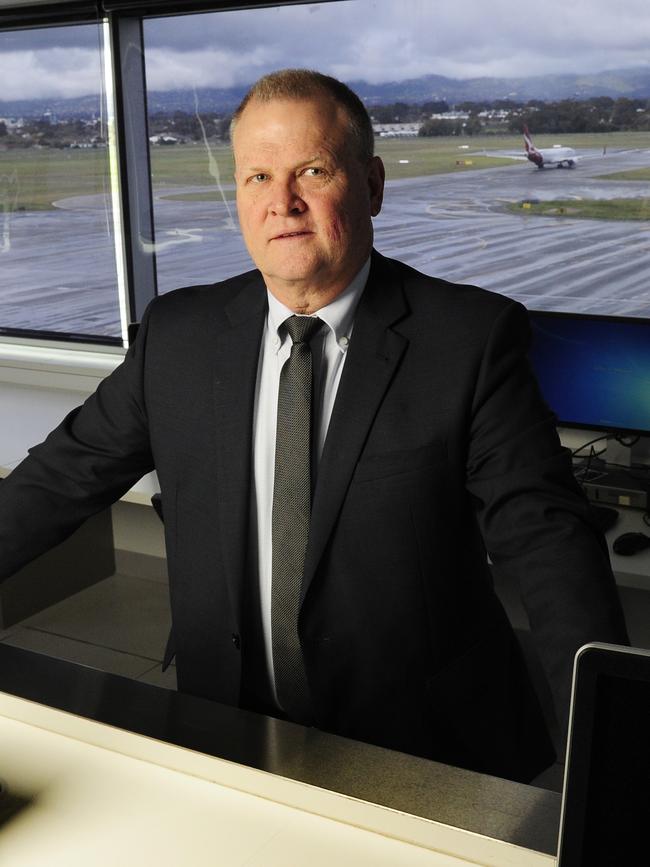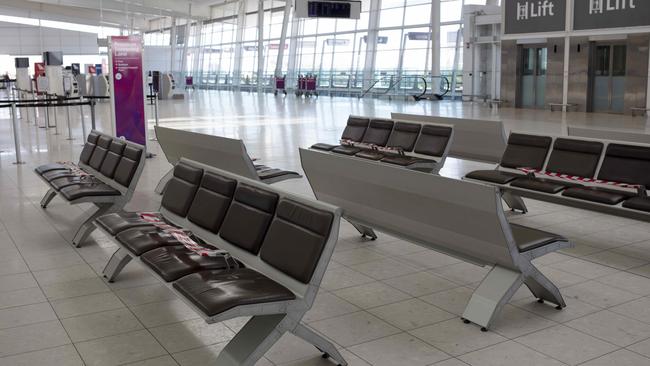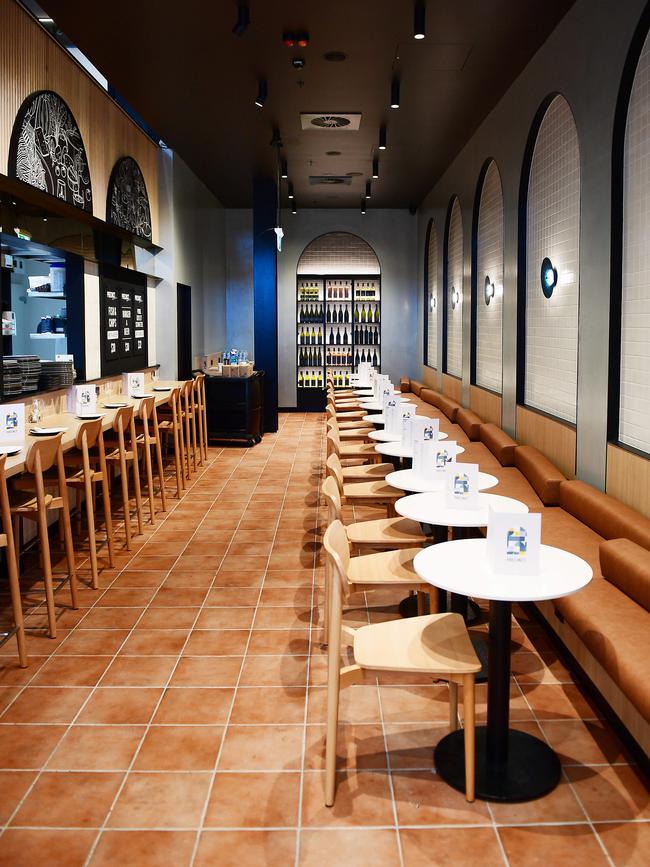Adelaide Airport reveals COVID-19 financial blow worth tens of millions
Adelaide Airport has revealed the massive financial blow caused by COVID-19, with tens of millions of dollars stripped from its bottom line. And the airport’s boss is warning there’s more pain to come.
SA Business
Don't miss out on the headlines from SA Business. Followed categories will be added to My News.
- Airport unveils first stage of $165m expansion
- SA coronavirus updates for Friday
- How to get the most out of your Advertiser subscription
Adelaide Airport has revealed the massive financial blow caused by the COVID-19 crisis, with tens of millions of dollars stripped from the airport’s bottom line.
And there’s more pain to come, with uncertainty around future travel expected to cost the airport more than $100m in lost revenue in the current financial year.
With international flights grinding to a halt and domestic traffic sitting at around 15 per cent of normal volumes, the airport’s main source of income – fees charged to airlines based on passenger numbers – has been slashed.
Rental income from retailers in the terminal and other businesses operating in the airport precinct has also taken a hit, while car parking revenue and other income has also plunged.
The airport is finalising its financial report for last financial year, but expects to book a cut to revenue of up to 25 per cent, or $56m, down from $226m in 2019.
Net profit is expected to fall by up to 70 per cent, or $31m, down from $43.7m.
And 2021 is posing an even greater challenge for the airport, with early forecasts suggesting about half of its 2019 revenue, or $113m, could be wiped out by ongoing travel restrictions, leading to an expected break even result for the year.

Adelaide Airport managing director Mark Young said a series of cost cutting measures had been implemented to cope with the economic uncertainty, but expected more pain ahead as travel restrictions took their toll on the embattled industry.
“We won’t see the most significant cost to the business until next year because the impact of COVID didn’t hit until February,” he said.
“Within a very short time we saw traffic free falling to about 5 per cent of previous volumes.
“But the impact next year (2020-21) is going to be significantly larger than this year (2019-20) because we won’t see a return of full domestic traffic until around late 2022 or 2023.”
Mr Young said while domestic traffic had recovered slightly since the initial COVID outbreak, a second wave of infections in Victoria had stalled any momentum that was building.
“Victoria has thrown us a bit of curve ball because a significant part of our traffic comes through there - one of the five busiest routes in Australia is Adelaide-Melbourne,” he said.
“We’re running at around 15 per cent of pre COVID levels and we’re hoping to see that incrementally increase over the next few months.
“If we see 40 or 50 per cent of previous volumes by the end the calendar year that would give us more than 200 flights a week – it’s not sustainable but it would give us a base to start building on over the course of next year.”

In the meantime all airport staff including senior management are working four-day weeks as part of a “very rigorous focus on costs”, which includes a review of the airport’s current staffing levels.
“We are and have been consulting with the business about the right size for our organisation going forward – I’m not going to put a number on it – it’s about the shape of our business,” Mr Young said.
“We have had to look at the structure of our business in every aspect of our operations - in terms of doing things differently to emerge and thrive on the other side.
“We’ve been able to do some great work with extremely supportive shareholders and financiers, and we’ve got the liquidity and cash that will see us through on our present planning horizon.”

While plans for future capital projects are being reviewed, a $165m expansion of the domestic and international terminal is on track for completion by the end of next year.
The project includes a major upgrade to international arrival and departure facilities, a new premium international lounge and a more than 80 per cent increase in the size of the retail and dining precinct.
However with the doors remaining closed to all but about eight food & beverage and other retail outlets in the terminal, delays to new openings in the expanded precinct are likely.
“We’ve undertaken a number of rent waivers in accordance with the property code of conduct,” Mr Young said.
“We’re working with tenants but it’s not possible to put a firm date on openings because of the restrictions on flights. But we’re talking to every single operator to understand their position because we do want to look to get through this.”
On Thursday Qatar Airways will commence a new freight service between Adelaide and Doha, flying twice a week to deliver meat, seafood, vegetables and other products to the Middle East.
Mr Young urged local exporters to sign up to the new service.
“It’s really important we see South Australian freight and produce being put into that Qatar aircraft.”

